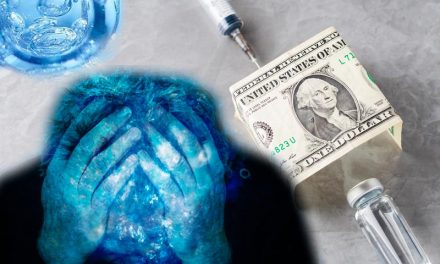Letter to the Editor
Does the United States Drug Agency (FDA) make scientific decisions?
Quintero Marino, Roberto.
Lawyer. Doctor in Political Science. Expert, International Relations. United Nations international civil servant for more than 22 years. Legal Adviser, AEPROMO, IMEOF, and ISCO3.
Suggestion on how to quote this paper:
Quintero Marino, Roberto. (2022). Does the United States Drug Agency (FDA) make scientific decisions?, Ozone Therapy Global Journal Vol. 11, nº 1, pp 327-330
Author mail Quintero Marino, Roberto, Asesor jurídico de AEPROMO, IMEOF e ISCO3, Madrid, España. Email: info@aepromo.org
Paper content
The FDA (Food and Drug Administration), a powerful US government agency, supposedly approves drugs in the United States based on science. Their duty is to “protect public health.”
The FDA is a reference for many countries in the world. With few exceptions, when this agency approves a medicines, the EMA (European Medicines Agency), which has functions similar to the FDA in the European Union, also does so; and from then on other countries of the world follow it.
The FDA has the very powerful pharmaceutical companies on its daily agenda. Medical science has a very fine and developed smell for money. The pharmaceutical market exceeds earnings from arms sales or telecommunications.
Director of the FDA. Doctor Robert M. Califf as of February 2022 is the new director of the FDA. He had already been in 2016. He is a member of the board of directors, of the science and technology committee, and shareholder of Cytokinetics Inc., a muscle biology biopharmaceutical company. As independent as the current director of the FDA would like to be, his economic and scientific past, closely linked to the interests of the pharmaceutical industry, will weigh heavily when making decisions.
FDA-approved opioids. More than half a million Americans have died in the past two decades from overdoses of legally sold opioids. They did not die for the drugs that the Latin American cartels traffic. It is estimated that two million people in the US are addicted to the pain reliever OxyContin, which is among the 50 most prescribed drugs in the United States.
Its manufacturer, the pharmaceutical company Purdue Pharma, had to reach an agreement to pay at least US$4.5 billion to partially compensate the damages caused to those millions of drug addicts, who consume opiates approved by the FDA. Purdue Pharma is owned by the Sackler family, known in the world of art and philanthropy.
Radden Keefe, said that in the review made by the New York Times of his book “Empire of Pain: The Secret History of the Sackler Dynasty”, the newspaper compared the Sackler’s business model and its objectives -selling a medicine similar to a drug- with that of Chapo Guzmán and the Mexican drug cartels.
The pharmaceutical company Johnson & Johnson, which also produces opioids, has had to reach agreements and pay money to partially compensate for the damage caused. Like the large medicines distributors in the United States such as CVS Health, Walmart and Walgreens.
The United States Drug Enforcement Administration noted that among the threats facing the United States are opioids, one of which is fentanyl [item 441 of the rapport]. Authorized as a medicine by the FDA in 1968, it has a higher potency than morphine. It is manufactured by the Belgian Janssen Pharmaceutica subsidiary of Johnson & Johnson.
In the United States, those who go to prison for drugs are Latinos, blacks, and foreigners. With the responsible white millionaires, after endless judicial processes, solutions are sought extra judicially with money. Perhaps the justice will never even try to initiate a criminal trial against a Sackler, much less set foot in a prison in the United States.
The director of the FDA and opioids. During Dr. Califf’s first term, the FDA approved five new opioids and only removed one from the market. For this reason, Democratic Senator Edward Markey described the FDA as “the largest pill pusher in the country.”
FDA and ozone therapy. This FDA, which is headed by a physician with economic interests in the pharmaceutical sector, and who favored the expansion of opioids, says about medical ozone that “is a toxic gas with no known useful medical application in specific, adjunctive, or preventive therapy.”
This decision adopted more than four decades ago has not been modified. Although the Pub Med Central database of the US National Library of Medicine has 11,132 records on ozone therapy.
Ozone therapy is a “medical act”. It is a complementary (not alternative) therapy, which is useful for a certain number of diseases, not for all. It is not a miracle therapy. It has practically no side effects.
Why doesn’t the FDA approve ozone therapy? It goes against the interests of pharmaceutical companies, since it is manufactured “in situ” at the time of treating the patient. Since it cannot be packaged because it is a labile gas, the verbs to store, pack, market and sell are not conjugated. Consequence: Pharmaceutical companies cannot do business with medical ozone.
Does the FDA make scientific decisions to authorize medicines? Not in all cases. The most tragic examples are the different authorizations given for opioids; and with the drug remdesivr, which during the COVID-19 epidemic, approved it despite the fact that the FDA itself recognized that it was an investigational drug and that it was not approved for any medical indication. The same thing happened with the Alzheimer’s drug aducanumab (aduhelm). The FDA approved it despite opposition from the agency’s independent advisory committee and Alzheimer’s experts. The pharmaceutical Biogen, owner of the medicine, would charge between US$10,000 to 50,000 per patient per year. This would make billions of dollars. FDA decisions that taste more like money than science.
This post is also available in:  Español (Spanish)
Español (Spanish)

































